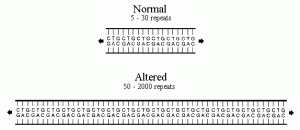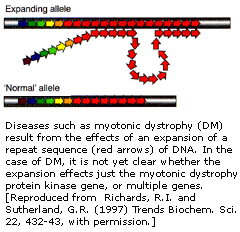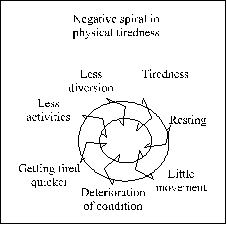|
|||||||||||||||||||||||||||||||||||||||||||||||||||||||||||||||||||||||||||||||||||||||||||||||||||||||||||||||||||||||||||||||||||||||||||||||||||||||||||||||||||||||||||||||||||||||||||||||||||||||||||||||||||||||||||||||||||||||||||||||||||||||||||||||||||||||||||||||||||||||||||||||||||||||||||||||||||||||||||||||||||||||||||||||||||||||||||||||||||||||||||||||||||||||||||||||||||||||||||||||||||||||||||||||||||||||||||||||||||||||||||||||||||||||||||||||||||||||||||||||||||||||||||||||||||||||||||||||||||||||||||||||||||||||||||||||||||||||||||||||||||||||||||||||||||||||||||||||||||||||||||||||||||||||||||||||||
|
|
|||||||||||||||||||||||||||||||||||||||||||||||||||||||||||||||||||||||||||||||||||||||||||||||||||||||||||||||||||||||||||||||||||||||||||||||||||||||||||||||||||||||||||||||||||||||||||||||||||||||||||||||||||||||||||||||||||||||||||||||||||||||||||||||||||||||||||||||||||||||||||||||||||||||||||||||||||||||||||||||||||||||||||||||||||||||||||||||||||||||||||||||||||||||||||||||||||||||||||||||||||||||||||||||||||||||||||||||||||||||||||||||||||||||||||||||||||||||||||||||||||||||||||||||||||||||||||||||||||||||||||||||||||||||||||||||||||||||||||||||||||||||||||||||||||||||||||||||||||||||||||||||||||||||||||||||||
Feeding Problems
FEEDING PROBLEMS
Many people have contacted us and have expressed concern and interest in feeding issues for people with CMD or Myotonic Dystrophy. Some case studies might give some insight into these issues. Your clinic may not have this updated information, but it’s important to take these issues seriously and discuss them with your doctor!
What is clear is that feeding is a very difficult issue for many people with myotonic and congenital myotonic dystrophy. The regular rules and concepts that people think about can not be applied here. Kids and adults have muscle problems associated with chewing and swallowing. Apparently with certain individuals there are very intense problems with the digestive system, as well. Most doctors will never see a case of myotonic dystrophy and even many experts rarely see a case of congenital myotonic dystrophy. So the resource base on which parents can draw from is virtually nil.
The problems with congenital myotonic dystrophy are compounded by the onset of the adult form, for most patients this occurs in the early teen years. Thus, there is a combination of both the congenital and the early onset of the adult form that might be the cause of these problems.
Thus, the parent is alone to deal with a very difficult situation that they do not understand. Here are a few cases that might shed some light on these difficulties.
- Case1
- Case2
- Case3
- Information from MDA
- Swallowing Disorders–ER Johnson, MD Neuromuscular Disease Family Conference
Financial Issues
FINANCIAL INFORMATION
Families that have children with Myotonic Dystrophy will face special financial challenges. These challenges can be best separated into short term and long term needs. Short term needs will be day to day living expenses. Long Term goals are dealing with a child who may need to have individual care for a lifetime. Both of these needs are important. Lets review some options:
DAY TO DAY LIVING EXPENSES There are many medical bills that will challenge a family financially. This is when a good insurance policy will be needed. Families with CMyD will need to insure that they have a good medical plan. Because of the expenses with CMyD this is an overriding factor. Even with the best of policies not everything will be covered in these days of managed care in the USA. If both spouses are working and have coverage this is ideal. You should realize that in changing jobs your policy will change. You need to explore how much the medical program covers and to insure that the new program will cover your child. Some programs will exempt existing conditions. You will need to actively explore what other means are available to pay bills. Some options to explore are state programs, Shriners Hospitals, Medicare if qualified, Birth to 3 Programs when young, and alternative programs. It’s possible that your child may qualify for Supplemental Social Security Income (SSI) in the USA. Also some states have programs that will make cash payments to families that have disabled children.
LONG TERM FINANCIAL PLANNING: You need to analyze your financial situation. You need to insure that the family can survive if the breadwinner dies or becomes disabled. You may need to have additional life insurance. It’s more likely that a short term disability may occur over a few months or years. How will the family cope with this? A good disability policy is mandatory if this occurs. You also need to review life insurance. Term Life insurance is less expensive in the short term but increases in the long term. You may want to review universal life policies for each spouse. You will have to review your financial situation to determine what would be best for you. Check with your medical insurance carrier to see if the child would be covered after age 18. Some policies and states require that coverage be extended to family members with disabilities.
It helps if both spouses are working and able to achieve coverage. Companies change coverage from time to time. Make sure during this change that they will still cover your child long term. You may need to establish a special trust to insure that your disabled child will receive the benefits of an inheritance. Generally any assets the child has upon reaching age 18 will be tapped first for any governmental programs. This means that any money left to the child would be “seized” by the state to pay for basic care. Many parents have set up “special needs” trusts that allow the child to benefit from money you may leave. This needs to be carefully drafted by a specialist in this area. Other relatives that may leave money to the child such as grandparents and others and should be advised to leave money to the “trust” and not the child. If necessary, you will need to have a guardian named for your child if they are not competent upon reaching age eighteen. Some law firms that specialize in these coverage’s advertise in Exceptional Parent Magazine.
Genetic Information
GENETIC INFORMATION
|
There are two types of Myotonic Dystrophy
DM1 is known as Type 1
DM2 is known as Type 2, and also known as PROMM or “Proximal Myotonic Myopathy“ DM1 is caused by an expanded repeat of CTG on Chromosome 19
DM2 is caused by an expanded quadruplet repeat of CTG on Chromosome 3 Differences in DM1 and DM2
DM2 does not seem to cause the severe congenital form when the mother that has the disease has an infant. Also the apathetic personality traits with DM1 do not seem to be associated with DM2. People with DM2 will have more weakness in the trunk of the body (proximal) versus DM1 will have more weakness in the distal parts of the body like legs and arms. The incidence of DM2 is unknown. There is a genetic test for DM2 just available from Athena Diagnostics. Estimation is that the incidence is less than 2% (QUEST Feb 2002) but it may be much higher.
A deficient gene causes DM1. This is an alteration in the myotonin protein kinase gene, specifically in the APOC2 locus located on the proximal long arm of chromosome 19. DM is an autosomal dominant condition; this means that only one copy of the gene with a genetic alteration is necessary for DM to occur. The genetic alteration found in the myotonin protein kinase is a repeating sequence of three specific nucleotides (these are the ‘building blocks’ which make up DNA). Normally in gene 19 the sequence of cytosine-thymidine-guanine (CTG) repeats itself from 5-37 times in a row, however in an altered DM gene this CTG sequence repeats 50+ times and in some cases it can exceed 2000. The number of repeats effects when the age of onset occurs and the severity of DM. The table below shows how the CTG repeat length/numbers effects the clinical symptoms
|
|||||||||||||||||||
| Table 1: Correlation of CTG repeat numbers with clinical symptoms | |||||||||||||||||||
|
|||||||||||||||||||
 |
The numbers of CTG repeats are stable from generation to generation when they are in the normal 5-30 repeats. The number of CTG repeats may change in number from generation to generation when they are in the range of 50+. The number of repeats will rarely decrease in number from parent to child. Figure 1 shows the difference between the normal and the altered CTG repeats |
||||||||||||||||||
|
Some authorities maintain that the correlation between the number of repeats and the severity of the illness is not absolute. A key factor they maintain is the age when the first symptoms appear. The earlier the symptoms appear the more likely that the disease may have a more severe manifestation. The affected mother has a 50% chance of transmitting the mutation to each child. The underlying Myotonic Dystrophy that the mother has is inherited as a “autosomal dominant trait” However, there is some thought that the mother has a “maternal factor” that passes through the placenta and thus is the cause of fetal muscle maturation arrest. (Farkas-Bargeton). There have a a very few documented cases of paternal (father’s) transmission of the congenital form. Click here for more info. Congenital Myotonic Dystrophy is related and linked very strongly to Myotonic Dystrophy. In virtually all cases the mother must be affected and have Myotonic Dystrophy. Myotonic Dystrophy is a genetic disease that is more progressive between generations. This is called anticipation; that means that each son or daughter that is affected may have the disease slightly worse. The CMD condition is potentially the worst outcome of this disease. Myotonic Dystrophy has the anticipation or amplification factor. Each succeeding generation may have the disease slightly worse. The number of repeats of the CTG sequence gets longer. The onset of Myotonic Dystrophy gets earlier as a general rule as the number of repeats increases. In this family of disorders the number of repeats tend to increase with succeeding generations. Again, this is known as “genetic anticipation” There also has been a report from England that there can be regression (shrinkage) as the MD allele is passed on to successive generations; this is mostly seen with paternal (through the father which is rare) transmission. The is also some reports of regression to a repeat number within the normal range Myotonic and CMD belong to a growing family of disorders where the genetic mutation involves unstable Trinucleotide repeats (C_G) These letters correspond to amino acids which form the basis of DNA. More information on Triplet Repeat Disorders or Triplet Repeat Information. A few related disorders: Fragile X Syndrome CGG |
|||||||||||||||||||
| CTG Repeat Numbers | |||||||||||||||||||
|
5 repeat and 16-30 repeat alleles have been shown to share the same linkage disequalibrium as DM. It is proposed that the 5 repeat allele expands to alleles in the 16-30 repeat range which then form a pool for recurrent DM mutations. In the absence of a high new mutation rate, this theory explains why myotonic dystrophy is maintained in the population and not lost via the congenital form. |
|||||||||||||||||||
 |
|||||||||||||||||||
| Diagram of How the disease may affect transcription
|
|||||||||||||||||||
Click below for a great booklet on Whether to test for Myotonic Dystrophy |
|||||||||||||||||||
| myotonic dystrophy an informed choice of testing | |||||||||||||||||||
How do I know if I have Myotonic dystrophy
|


